- Home
- Bruce Sterling
Globalhead
Globalhead Read online
Globalhead
Bruce Sterling
Spectra (2011)
* * *
Rating: ★★★★☆
Tags: Science Fiction, General, Fiction
Science Fictionttt Generalttt Fictionttt
Featuring thirteen satirical short stories, a unique collection includes scientific superstars, a rock singer who is the voice of the people, and two lost souls who drive off the edge of the world and find each other.
From the Paperback edition.
This second collection of short fiction by Bruce Sterling, set in such disparate environments as ancient Assyria and posthuman France, provides a stimulating and entertaining glimpse inside the "global head" of one of imaginative fiction's most exciting talents.
STORIES FROM THE EDGE OF POSSIBILITY
“Storming the Cosmos,” written in collaboration with Rudy Rucker, shows how America won the race to the moon … with some help from Soviet bureaucracy and a sentient machine from beyond the stars.
Ghettos of civilization are surrounded by a world gone back to the wild in “The Shores of Bohemia.”
An ensouled artificial intelligence becomes the first dimensionaut for the glory of Allah, “The Compassionate, the Digital.”
In a chaotic American city patrolled by ragtag militias like the Chamber of Commerce and the Library Defense League, a conscienceless scientist must face the hellish landscape he has created, in “The Moral Bullet,” a collaboration with John Kessel.
A mysterious smuggler makes the most of chaos in the crumbling former Soviet Union in “Hollywood Kremlin.”
ALSO BY BRUCE STERLING
novels
The Artificial Kid
*The Difference Engine (with William Gibson)
*Heavy Weather
*Holy Fire
Involution Ocean
Islands in the Net
Schismatrix
*Distraction
Schismatrix Plus
AND SOON IN HARDCOVER
*Zeitgeist
stories
Crystal Express
*A Good Old-Fashioned Future
nonfiction
*The Hacker Crackdown: Law and Disorder on the Electronic Frontier
editor
Mirrorshades: the Cyberpunk Anthology
*Available from Bantam Books
This edition contains the complete text of the original hardcover edition.
NOT ONE WORD HAD BEEN OMITTED.
GLOBALHEAD
A Bantam Spectra Book/published by arrangement with the author
PUBLISHING HISTORY
Mark V. Ziesing hardcover edition/1992
Bantam paperback edition/November 1994
Our Neural Chernobyl—First published in The Magazine of Fantasy and Science Fiction, June 1988. © 1988 by Mercury Press, Inc. Storming the Cosmos—by Bruce Sterling and Rudy Rucker—First published in Isaac Asimov’s Science Fiction Magazine, Mid-December 1985. © 1985 by Davis Publications, Inc. The Compassionate, the Digital—First published in Interzone #14, Winter 1985. © 1985 by Bruce Sterling. Jim and Irene—First published in WHEN THE MUSIC’S OVER, edited by Lewis Shiner. Bantam Spectra 1991. © 1991 by Bruce Sterling. The Sword of Damocles—First published in Isaac Asimov’s Science Fiction Magazine, February 1990. © 1990 by Davis Publications, Inc. The Gulf Wars—First published in OMNI, February 1988. © 1987 by Omni Publications International Limited. The Shores of Bohemia—First published in UNIVERSE 1, edited by Robert Silverberg and Karen Haber. © 1990 by Robert Silverberg and Karen Haber. The Moral Bullet—by Bruce Sterling and John Kessel—First published in Isaac Asimov’s Science Fiction Magazine, July 1991. © 1991 by Davis Publications, Inc. The Unthinkable—First published in The Magazine of Fantasy and Science Fiction, August 1991. © 1991 by Mercury Press, Inc. We See Things Differently—First published in SEMIOTEXT(E) SF, edited by Rudy Rucker, Peter Lamborn Wilson, and Robert Anton Wilson. © 1989 by Autonomedia. Hollywood Kremlin—First published in The Magazine of Fantasy and Science Fiction, October 1990. © 1990 by Mercury Press, Inc. Are You For 86?—An original publication in this volume. © 1992 by Bruce Sterling. Dori Bangs—First published in Isaac Asimov’s Science Fiction Magazine, September 1989.
© 1989 by Davis Publications, Inc.
SPECTRA and the portrayal of a boxed “s” are trademarks of Bantam Books, a division of Random House, Inc.
All rights reserved.
Copyright © 1992 by Bruce Sterling.
Library of Congress Catalog Card Number: 92-064499.
No part of this book may be reproduced or transmitted in any form or by any means, electronic or mechanical, including photocopying, recording, or by any information storage and retrieval system, without permission in writing from the publisher.
For information address: Bantam Books.
eISBN: 978-0-307-79676-9
Bantam Books are published by Bantam Books, a division of Random House, Inc. Its trademark, consisting of the words “Bantam Books” and the portrayal of a rooster, is Registered in U.S. Patent and Trademark Office and in other countries. Marca Registrada. Bantam Books, 1540 Broadway, New York, New York 10036.
v3.1
CONTENTS
Cover
Other Books by This Author
Title Page
Copyright
Our Neural Chernobyl
Storming the Cosmos
The Compassionate, the Digital
Jim and Irene
The Sword of Damocles
The Gulf Wars
The Shores of Bohemia
The Moral Bullet
The Unthinkable
We See Things Differently
Hollywood Kremlin
Are You For 86?
Dori Bangs
About the Author
OUR NEURAL
CHERNOBYL
The late twentieth century, and the early years of our own millennium, form, in retrospect, a single era. This was the Age of the Normal Accident, in which people cheerfully accepted technological risks that today would seem quite insane.
Chernobyls were astonishingly frequent during this footloose, not to say criminally negligent, period. The nineties, with their rapid spread of powerful industrial technologies to the developing world, were a decade of frightening enormities, including the Djakarta supertanker spill, the Lahore meltdown, and the gradual but devastating mass poisonings from tainted Kenyan contraceptives.
Yet none of these prepared humankind for the astonishing global effects of biotechnology’s worst disaster: the event that has come to be known as the “neural Chernobyl.”
We should be grateful, then, that such an authority as the Novel Prize-winning systems neurochemist Dr. Felix Hotton should have turned his able pen to the history of Our Neural Chernobyl (Bessemer, December 2056, $499.95). Dr. Hotton is uniquely qualified to give us this devastating reassessment of the past’s wrongheaded practices. For Dr. Hotton is a shining exemplar of the new “Open-Tower Science,” that social movement within the scientific community that arose in response to the New Luddism of the teens and twenties.
Such pioneering Hotton papers as “The Locus Coeruleus Efferent Network: What in Heck Is It There For?” and “My Grand Fun Tracing Neural Connections With Tetramethylbenzidine” established this new, relaxed, and triumphantly subjective school of scientific exploration.
Today’s scientist is a far cry from the white-coated sociopath of the past. Scientists today are democratized, media-conscious, fully integrated into the mainstream of modern culture. Today’s young people, who admire scientists with a devotion once reserved for pop stars, can scarcely imagine the situation otherwise.
But in Chapter 1, “The Social Roots of Gene-Hacking,” Dr. Hotton brings turn-of-the-century attitudes in
to startling relief. This was the golden age of applied biotech. Anxious attitudes toward “genetic tampering” changed rapidly when the terrifying AIDS pandemic was finally broken by recombinant DNA research.
It was during this period that the world first became aware that the AIDS retrovirus was a fantastic blessing in a particularly hideous disguise. This disease, which dug itself with horrible, virulent cunning into the very genetic structure of its victims, proved a medical marvel when finally broken to harness. The AIDS virus’s RNA transcriptase system proved an able workhorse, successfully carrying healing segments of recombinant DNA into sufferers from a myriad of genetic defects. Suddenly one ailment after another fell to the miracle of RNA transcriptase techniques: sickle-cell anemia, cystic fibrosis, Tay-Sachs disease—literally hundreds of syndromes now only an unpleasant memory.
As billions poured into the biotech industry, and the instruments of research were simplified, an unexpected dynamic emerged: the rise of “gene-hacking.” As Dr. Hotton points out, the situation had a perfect parallel in the 1970s and 1980s in the subculture of computer hacking. Here again was an enormously powerful technology suddenly within the reach of the individual.
As biotech companies multiplied, becoming ever smaller and more advanced, a hacker subculture rose around this “hot technology” like a cloud of steam. These ingenious, anomic individuals, often led into a state of manic self-absorption by their ability to dice with genetic destiny, felt no loyalty to social interests higher than their own curiosity. As early as the 1980s, devices such as high-performance liquid chromatographs, cell-culture systems, and DNA sequencers were small enough to fit into a closet or attic. If not bought from junkyards, diverted, or stolen outright, they could be reconstructed from off-the-shelf parts by any bright and determined teenager.
Dr. Hotton’s second chapter explores the background of one such individual: Andrew (“Bugs”) Berenbaum, now generally accepted as the perpetrator of the neural Chernobyl.
Bugs Berenbaum, as Dr. Hotton convincingly shows, was not much different from a small horde of similar bright young misfits surrounding the genetic establishments of North Carolina’s Research Triangle. His father was a semi-successful free-lance programmer, his mother a heavy marijuana user whose life centered around her role as “Lady Anne of Greengables” in Raleigh’s Society for Creative Anachronism.
Both parents maintained a flimsy pretense of intellectual superiority, impressing upon Andrew the belief that the family’s sufferings derived from the general stupidity and limited imagination of the average citizen. And Berenbaum, who showed an early interest in such subjects as math and engineering (then considered markedly unglamorous), did suffer some persecution from peers and schoolmates. At fifteen he had already drifted into the gene-hacker subculture, accessing gossip and learning “the scene” through computer bulletin boards and all-night beer-and-pizza sessions with other would-be pros.
At twenty-one, Berenbaum was working a summer internship with the small Raleigh firm of CoCoGenCo, a producer of specialized biochemicals. CoCoGenCo, as later congressional investigations proved, was actually a front for the California “designer drug” manufacturer and smuggler, Jimmy “Screech” McCarley. McCarley’s agents within CoCoGenCo ran innumerable late-night “research projects” in conditions of heavy secrecy. In reality, these “secret projects” were straight production runs of synthetic cocaine, beta-phenethylamine, and sundry tailored variants of endorphin, a natural antipain chemical ten thousand times more potent than morphine.
One of McCarley’s “black hackers,” possibly Berenbaum himself, conceived the sinister notion of “implanted dope factories.” By attaching the drug-producing genetics directly into the human genome, it was argued, abusers could be “wet-wired” into permanent states of intoxication. The agent of fixation would be the AIDS retrovirus, whose RNA sequence was a matter of common knowledge and available on dozens of open scientific databases. The one drawback to the scheme, of course, was that the abuser would “burn out like a shitpaper moth in a klieg light,” to use Dr. Hotton’s memorable phrase.
Chapter 3 is rather technical. Given Dr. Hotton’s light and popular style, it makes splendid reading. Dr. Hotton attempts to reconstruct Berenbaum’s crude attempts to rectify the situation through gross manipulation of the AIDS RNA transcriptase. What Berenbaum sought, of course, was a way to shut-off and start-up the transcriptase carrier, so that the internal drug factory could be activated at will. Berenbaum’s custom transcriptase was designed to react to a simple user-induced trigger—probably D,1,2,5-phospholytic gluteinase, a fractionated component of “Dr. Brown’s Celery Soda,” as Hotton suggests. This harmless beverage was a favorite quaff of gene-hacker circles.
Finding the genomes for cocaine-production too complex, Berenbaum (or perhaps a close associate, one Richard “Sticky” Ravetch) switched to a simpler payload: the just-discovered genome for mammalian dendritic growth factor. Dendrites are the treelike branches of brain cells, familiar to every modern schoolchild, which provide the mammalian brain with its staggering webbed complexity. It was theorized at the time that DG factor might be the key to vastly higher states of human intelligence. It is to be presumed that both Berenbaum and Ravetch had dosed themselves with it. As many modern victims of the neural chernobyl can testify, it does have an effect. Not precisely the one that the CoCoGenCo zealots envisioned, however.
While under the temporary maddening elation of dendritic “branch-effect,” Berenbaum made his unfortunate breakthrough. He succeeded in providing his model RNA transcriptase with a trigger, but a trigger that made the transcriptase itself far more virulent than the original AIDS virus itself. The stage was set for disaster.
It was at this point that one must remember the social attitudes that bred the soul-threatening isolation of the period’s scientific workers. Dr. Hotton is quite pitiless in his psychoanalysis of the mental mind-set of his predecessors. The supposedly “objective worldview” of the sciences is now quite properly seen as a form of mental brainwashing, deliberately stripping the victim of the full spectrum of human emotional response. Under such conditions, Berenbaum’s reckless act becomes almost pitiable; it was a convulsive overcompensation for years of emotional starvation. Without consulting his superiors, who might have shown more discretion, Berenbaum began offering free samples of his new wetwares to anyone willing to inject them.
There was a sudden brief plague of eccentric genius in Raleigh, before the now-well-known symptoms of “dendritic crash” took over, and plunged the experimenters into vision-riddled, poetic insanity. Berenbaum himself committed suicide well before the full effects were known. And the full effects, of course, were to go far beyond even this lamentable human tragedy.
Chapter 4 becomes an enthralling detective story as the evidence slowly mounts.
Even today the term “Raleigh collie” has a special ring for dog fanciers, many of whom have forgotten its original derivation. These likable, companionable, and disquietingly intelligent pets were soon transported all over the nation by eager buyers and breeders. Once it had made the jump from human host to canine, Berenbaum’s transcriptase derivative, like the AIDS virus itself, was passed on through the canine maternal womb. It was also transmitted through canine sexual intercourse and, via saliva, through biting and licking.
No dendritically enriched “Raleigh collie” would think of biting a human being. On the contrary, these loyal and well-behaved pets have even been known to right spilled garbage cans and replace their trash. Neural chernobyl infections remain rare in humans. But they spread through North America’s canine population like wildfire, as Dr. Hotton shows in a series of cleverly designed maps and charts.
Chapter 5 offers us the benefit of hindsight. We are now accustomed to the idea of many different modes of “intelligence.” There are, for instance, the various types of computer Artificial Intelligence, which bear no real relation to human “thinking.” This was not unexpected—but the diverse forms of animal intelligen
ce can still astonish in their variety.
The variance between Canis familiaris and his wild cousin, the coyote, remains unexplained. Dr. Hotton makes a good effort, basing his explication on the coyote neural mapping of his colleague, Dr. Reyna Sanchez of Los Alamos National Laboratory. It does seem likely that the coyote’s more fully reticulated basal commissure plays a role. At any rate, it is now clear that a startling advanced form of social organization has taken root among the nation’s feral coyote organization, with the use of elaborate coded barks, “scent-dumps,” and specialized roles in hunting and food storage. Many of the nation’s ranchers have now taken to the “protection system,” in which coyote packs are “bought off” with slaughtered, barbecued livestock and sacks of dog treats. Persistent reports in Montana, Idaho, and Saskatchewan insist that coyotes have been spotted wearing cast-off clothing during the worst cold of winter.
It is possible that the common household cat was infected even earlier than the dog. Yet the effects of heightened cat intelligence are subtle and difficult to specify. Notoriously reluctant lab subjects, cats in their infected states are even sulkier about running mazes, solving trick boxes, and so on, preferring to wait out their interlocutors with inscrutable feline patience.
It has been suggested that some domestic cats show a heightened interest in television programs. Dr. Hotton casts a skeptical light on this, pointing out (rightly, as this reviewer thinks) that cats spend most of their waking hours sitting and staring into space. Staring at the flickering of a television is not much more remarkable than the hearthside cat’s fondness for the flickering fire. It certainly does not imply “understanding” of a program’s content. There are, however, many cases where cats have learned to paw-push the buttons of remote-control units. Those who keep cats as mousers have claimed that some cats now torture birds and rodents for longer periods, with greater ingenuity, and in some cases with improvised tools.

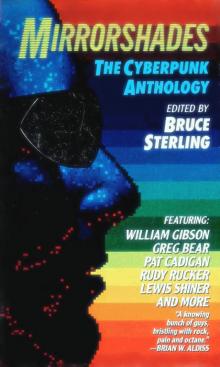 Mirrorshades: The Cyberpunk Anthology
Mirrorshades: The Cyberpunk Anthology The Wonderful Power of Storytelling
The Wonderful Power of Storytelling Love Is Strange (A Paranormal Romance)
Love Is Strange (A Paranormal Romance)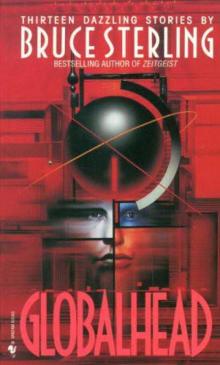 Globalhead
Globalhead Essays. FSF Columns
Essays. FSF Columns The Hacker Crackdown
The Hacker Crackdown Bicycle Repairman
Bicycle Repairman Black Swan
Black Swan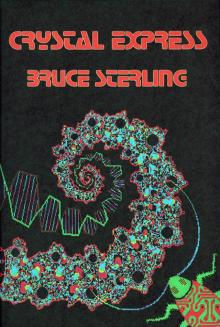 Crystal Express
Crystal Express Islands in the Net
Islands in the Net Pirate Utopia
Pirate Utopia GURPS' LABOUR LOST
GURPS' LABOUR LOST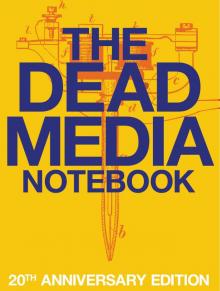 The Dead Media Notebook
The Dead Media Notebook Unstable Networks
Unstable Networks The Manifesto of January 3, 2000
The Manifesto of January 3, 2000 Heavy Weather
Heavy Weather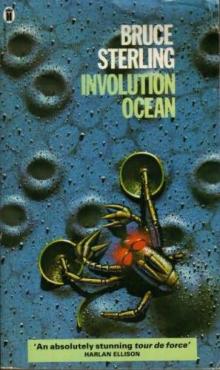 Involution Ocean
Involution Ocean The Epic Struggle of the Internet of Things
The Epic Struggle of the Internet of Things A Good Old-Fashioned Future
A Good Old-Fashioned Future The Littlest Jackal
The Littlest Jackal Zeitgeist
Zeitgeist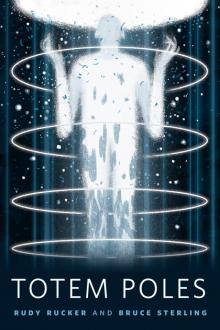 Totem Poles
Totem Poles Ascendancies
Ascendancies CyberView 1991
CyberView 1991 War Is Virtual Hell
War Is Virtual Hell Taklamakan
Taklamakan Holy Fire
Holy Fire Cyberpunk in the Nineties
Cyberpunk in the Nineties Schismatrix Plus
Schismatrix Plus The Artificial Kid
The Artificial Kid Essays. Catscan Columns
Essays. Catscan Columns Maneki Neko
Maneki Neko Distraction
Distraction In Paradise
In Paradise Red Star, Winter Orbit
Red Star, Winter Orbit Luciferase
Luciferase